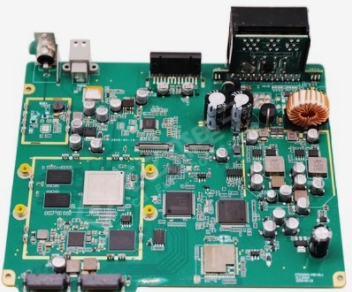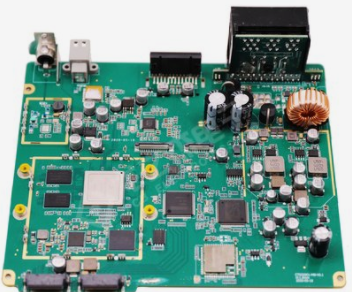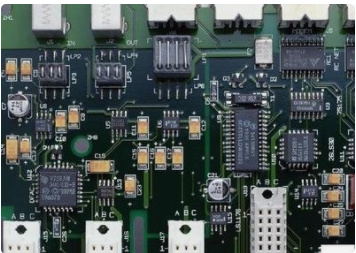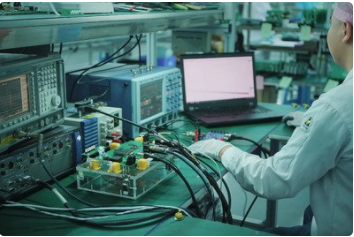
After designing the circuit structure and device position, the EMI control of PCB becomes extremely important for the overall design. How to avoid the electromagnetic interference of PCB in switching power supply has become a topic of great concern to developers. In this article, I will introduce how to control EMI through the control of component layout.

The practice of PCB component layout has proved that even if the circuit schematic is correctly designed and the printed circuit board is improperly designed, the reliability of electronic equipment will be adversely affected. For example, if two thin parallel lines of the printed board are close together, the delay of the signal waveform will be formed and the reflected noise will be formed at the end of the transmission line; The interference caused by improper consideration of power supply and ground wire will degrade the performance of the product. Therefore, correct methods should be used when designing printed circuit boards.
Each switching power supply has four current circuits:
(1) AC circuit of power switch;
(2) Output rectifier AC circuit;
(3) Input signal source current circuit;
(4) Output load current circuit.
The input circuit charges the input capacitor through an approximate DC current, and the filter capacitor mainly plays a broadband energy storage role; Similarly, the output filter capacitor is also used to store high-frequency energy from the output rectifier and eliminate the DC energy of the output load circuit. Therefore, the terminals of the input and output filter capacitors are very important. The input and output current circuits should be connected to the power supply only from the terminals of the filter capacitors; If the connection between the input/output circuit and the power switch/rectifier circuit cannot be directly connected to the terminal of the capacitor, the AC energy will be radiated to the environment by the input or output filter capacitor.
The AC circuit of the power switch and the AC circuit of the rectifier contain high amplitude trapezoidal currents. The harmonic component of these currents is very high, and its frequency is far greater than the basic frequency of the switch. The peak amplitude can be up to 5 times the amplitude of the continuous input/output DC current. The transition time is usually about 50ns. These two circuits are most likely to generate electromagnetic interference, so these AC circuits must be laid before wiring other PCB printed lines in the power supply. The three main components of each circuit, filter capacitor, power switch or rectifier, inductor or transformer, should be placed adjacent to each other, and the component position should be adjusted to make the current path between them as short as possible. The best way to establish the switching power supply layout is similar to its electrical design. The best design process is as follows:
Place the transformer
Design power switch current circuit
Design current circuit of output rectifier
Control circuit connected to AC power circuit
Design input current source circuit and input filter Design output load circuit and output filter According to the functional unit of the circuit, the layout of all components of the circuit shall comply with the following principles:
(1) First, consider PCB size. When the PCB size is too large, the printed line is long, the impedance increases, the noise resistance decreases, and the cost increases; If it is too small, the heat dissipation is poor, and adjacent lines are vulnerable to interference. The optimal shape of the circuit board is rectangular, with a length to width ratio of 3:2 or 4:3. The distance between the components located at the edge of the circuit board and the edge of the circuit board is generally not less than 2mm.
(2) When placing the device, it is necessary to consider the future welding, not too intensive.
(3) Take the core components of each functional circuit as the center, and arrange around it. The components and parts shall be evenly, orderly and compactly arranged on the PCB to minimize and shorten the lead and connection between components and parts, and the decoupling capacitor shall be close to the VCC of components as much as possible.
(4) For circuits operating at high frequencies, the distribution parameters between components should be considered. For general circuits, components shall be arranged in parallel as far as possible. In this way, it is not only beautiful, but also easy to assemble and weld, and easy to mass produce.
(5) Arrange the position of each functional circuit unit according to the circuit flow, so that the layout is convenient for signal flow and the signal is kept in the same direction as far as possible.
(6) The primary principle of layout is to ensure the distribution rate of wiring, pay attention to the connection of flying wires when moving components, and put the components with wiring relationship together.
(7) Reduce the loop area as much as possible to suppress the radiated interference of switching power supply
The above are some methods to control and suppress electromagnetic interference in PCB by placing and layout PCB components. Any mistake in these steps may cause the product's EMI to be unqualified, so it is necessary to fully understand them. Friends who are experiencing such problems can collect this article as a data reserve.









